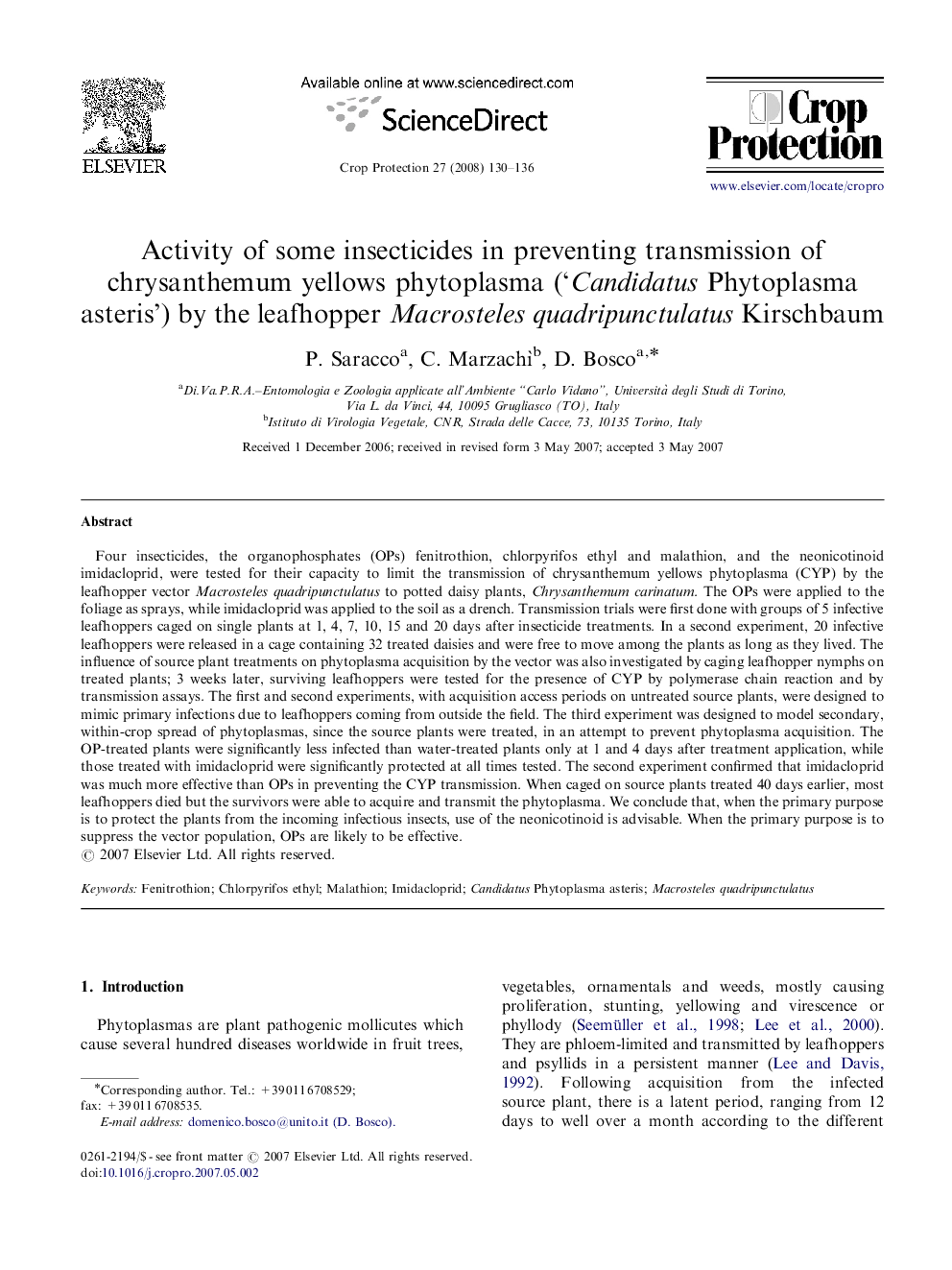| کد مقاله | کد نشریه | سال انتشار | مقاله انگلیسی | نسخه تمام متن |
|---|---|---|---|---|
| 4507695 | 1321376 | 2008 | 7 صفحه PDF | دانلود رایگان |

Four insecticides, the organophosphates (OPs) fenitrothion, chlorpyrifos ethyl and malathion, and the neonicotinoid imidacloprid, were tested for their capacity to limit the transmission of chrysanthemum yellows phytoplasma (CYP) by the leafhopper vector Macrosteles quadripunctulatus to potted daisy plants, Chrysanthemum carinatum. The OPs were applied to the foliage as sprays, while imidacloprid was applied to the soil as a drench. Transmission trials were first done with groups of 5 infective leafhoppers caged on single plants at 1, 4, 7, 10, 15 and 20 days after insecticide treatments. In a second experiment, 20 infective leafhoppers were released in a cage containing 32 treated daisies and were free to move among the plants as long as they lived. The influence of source plant treatments on phytoplasma acquisition by the vector was also investigated by caging leafhopper nymphs on treated plants; 3 weeks later, surviving leafhoppers were tested for the presence of CYP by polymerase chain reaction and by transmission assays. The first and second experiments, with acquisition access periods on untreated source plants, were designed to mimic primary infections due to leafhoppers coming from outside the field. The third experiment was designed to model secondary, within-crop spread of phytoplasmas, since the source plants were treated, in an attempt to prevent phytoplasma acquisition. The OP-treated plants were significantly less infected than water-treated plants only at 1 and 4 days after treatment application, while those treated with imidacloprid were significantly protected at all times tested. The second experiment confirmed that imidacloprid was much more effective than OPs in preventing the CYP transmission. When caged on source plants treated 40 days earlier, most leafhoppers died but the survivors were able to acquire and transmit the phytoplasma. We conclude that, when the primary purpose is to protect the plants from the incoming infectious insects, use of the neonicotinoid is advisable. When the primary purpose is to suppress the vector population, OPs are likely to be effective.
Journal: Crop Protection - Volume 27, Issue 1, January 2008, Pages 130–136